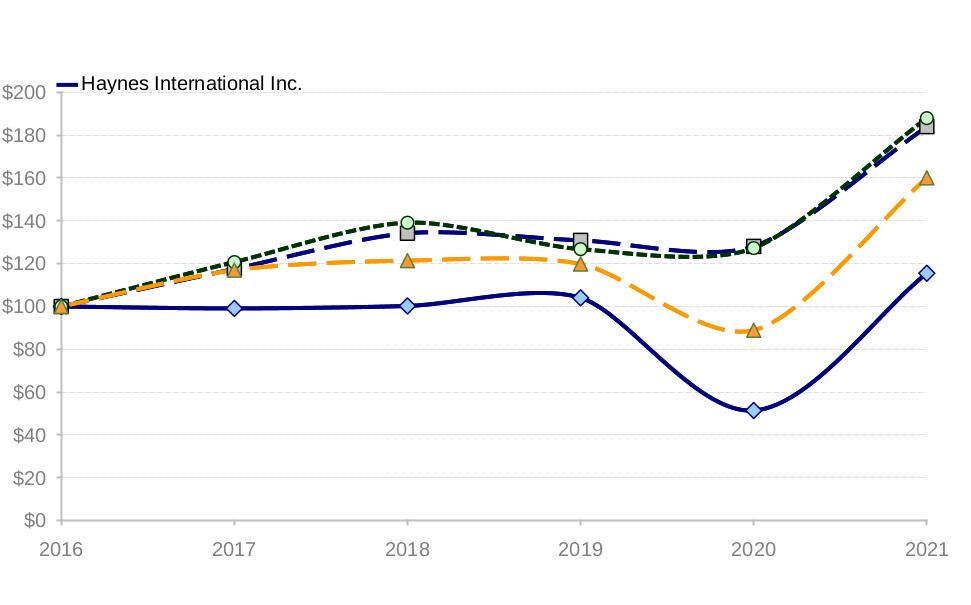Sales to the industrial gas turbine market were $66.8 million in fiscal 2021, an increase of 18.0% from $56.6 million in fiscal 2020, due to an increase in volume of 25.5%, partially offset by a decrease in average selling price per pound of 6.0%, or $1.01. The increase in volume is primarily attributable to the impact of the Company’s share gain initiative. The decrease in average selling price per pound primarily reflects lower pricing due to competition and other factors combined with a lower-value product mix, which decreased average selling price per pound by approximately $2.23, partially offset by higher raw material market prices, which increased the average selling price per pound by approximately $1.22.
Sales to other markets were $58.1 million in fiscal 2021, an increase of 28.8% from $45.1 million in fiscal 2020, due to a 62.2% increase in volume, partially offset by a 20.6%, or $7.39, decrease in average selling price per pound. The increase in volume was primarily due to an increase in sales to the flue-gas desulfurization market. The decrease in average selling price reflects a lower-value product mix, increased competition and other factors, which decreased average selling price per pound by approximately $8.64, partially offset by higher raw material market prices, which increased average selling price per pound by approximately $1.25.
Other Revenue. Other revenue was $21.6 million in fiscal 2021, a decrease of 9.0% from $23.7 million in fiscal 2020. The decrease in other revenue is primarily attributable to decreased toll conversion services.
Cost of Sales. Cost of sales was $297.9 million, or 88.2% of net revenues, in fiscal 2021 compared to $335.9 million, or 88.3% of net revenues, in fiscal 2020. This decrease was primarily due to lower volumes sold combined with continued traction in the Company’s cost reduction initiatives, partially offset by lower fixed-cost absorption.
Gross Profit. As a result of the above factors, gross profit was $39.7 million in fiscal 2021, a decrease of $4.9 million from $44.6 million in fiscal 2020. Gross profit as a percentage of net revenue increased to 11.8% in fiscal 2021 as compared to 11.7% in fiscal 2020 despite shipped volumes decreasing by 4.5%, reflecting the continued traction of the Company’s cost reduction initiatives and pricing initiatives.
Selling, General and Administrative Expense. Selling, general and administrative expense was $43.5 million for fiscal 2021, an increase of $3.2 million, or 7.8%, from $40.3 million in fiscal 2020. This increase is primarily attributable to higher incentive compensation expenses, which were partially offset by significant cost-saving measures taken as a result of the COVID-19 pandemic, including headcount reductions and other measures. Selling, general and administrative expense as a percentage of net revenues increased to 12.9% in fiscal 2021 compared to 10.6% in fiscal 2020.
Research and Technical Expense. Research and technical expense was $3.4 million, or 1.0% of net revenues, for fiscal 2021, compared to $3.7 million, or 1.0% of net revenues, in fiscal 2020.
Operating Income/(Loss). As a result of the above factors, operating loss in fiscal 2021 was $(7.1) million, compared to operating income of $0.6 million in fiscal 2020.
Nonoperating retirement benefit expense. Nonoperating retirement benefit expense was $1.5 million in fiscal 2021, compared to $6.8 million in fiscal 2020. The decrease in expense was primarily driven by favorable retiree health care spending and higher than expected return on plan assets in the September 30, 2020 valuation.
Income Taxes. Income tax benefit was $1.1 million during fiscal 2021, a difference of $0.1 million from a benefit of $1.0 million in the same period of fiscal 2020, driven by a tax rate change in the United Kingdom that resulted in an increase to deferred tax expense of $0.4 million, partially offset by an increase in loss before taxes of $2.3 million, which resulted in a higher tax benefit.
Net Income/(Loss). As a result of the above factors, net loss for fiscal 2021 was $(8.7) million, a change of $2.2 million from net loss of $(6.5) million in fiscal 2020.
